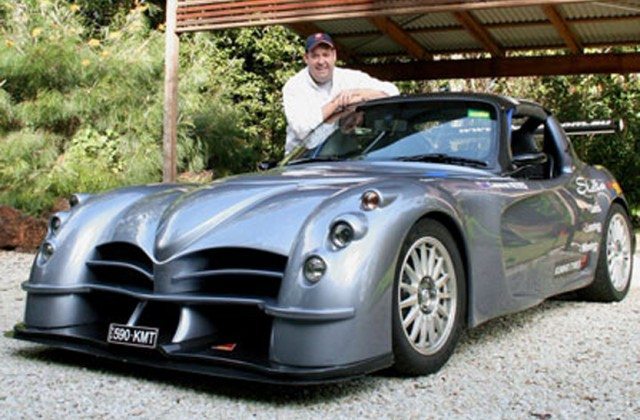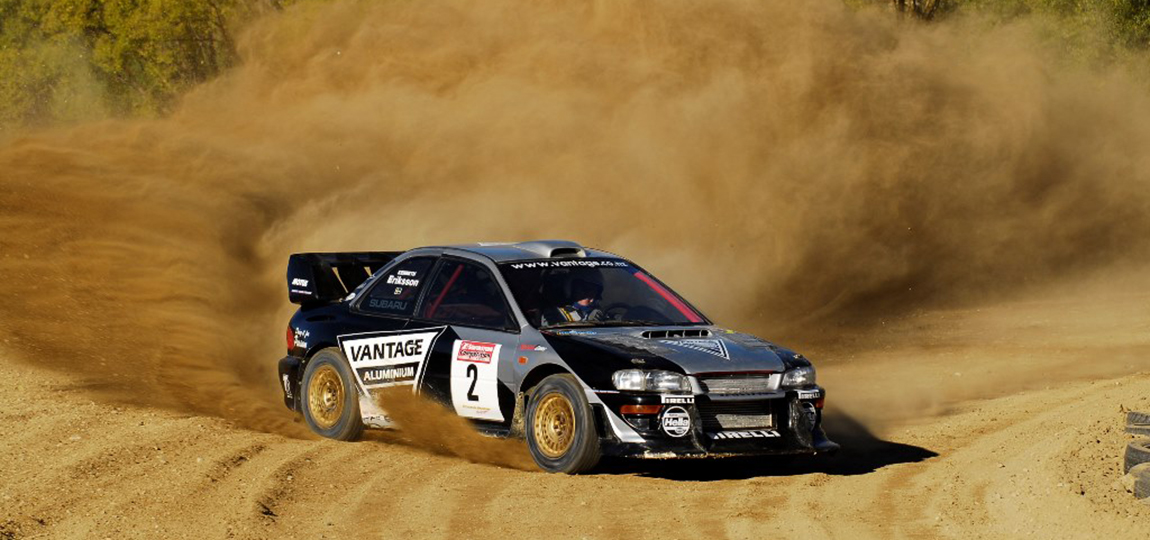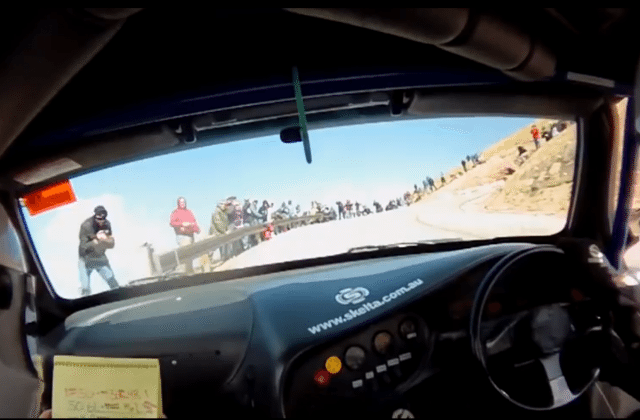Australian Jeff Denmeade readies a return to incredible Pikes Peak Hill Climb in 2012 at the wheel of Australia’s own Skelta Sports Car. LINK
Jeff Denmeade and the Skelta will enter Pikes Peak in 2012. Having competed and won at Pikes Peak in 2010, Aussie born Denmeade is heading back to the Worlds greatest, and most famous, Hill climb.
Jeff set a new qualifying record at Pikes Peak at his first attempt, and won his class beating the US and Canadian rally champs in 2010, and has been planning a return since then.
“Now Pikes Peak is 100% paved from top to bottom by environmental court order, it’s a whole new event now, and the speeds have gone up and times are starting to tumble, and to be back there in Australia’s own phenomenal Skelta G-Force will make us the first Australians to compete there in an Australian produced, designed and manufactured vehicle” He continued, “4WD is always an advantage, unless you can get weight down in a 2WD car, and given the lack of dirt now Pikes is all paved, a light weight 2WD car with great turn-in and high-speed balance and control is the way to go for this event is my thinking!”
Denmeade will be competing in the very Skelta that came 2nd outright at Targa Tasmania in 2010, prior to the rules being re-written to disallow it further future entries.
Skelta builder and owner, Ray Vandersee says “Pike’s Peak is an event I’ve always been keen on. Of course, the Skelta was designed as a tarmac racer for road and track work so now that the whole course is paved, I expect the G-Force will be well suited.
“I was incredibly impressed with Jeff & Catherine’s record breaking run in last year’s climb so I’m very happy to be associated with their attempt next year. Its going to be great to see an Australian product competing on the world stage of the longest running motorsport event in the world.” – Ray Vandersee
Further adding, Denmeade says “we know we can do better this time around than before as the Skelta is very fast, and faster than the established GT3 Porsches, so it’s going to be good, and I’m incredibly excited to be representing Australia through and through again on the 2012 event, but up a notch”.
Interesting to note, Denmeade’s time from his 2010 Pikes Peak run wasn’t beaten by anyone in the 2011 event from either Time Attack 4WD class or the Open class. Denmeade expects to be 30 – 45 secs faster in the Skelta than he was in his Australian prepped production Lancer Evolution he ran in 2010.
Denmeade will again be navigated by his partner Catherine Hammond, and will be proudly supported in part by numerous Aussie businesses supporting the all-Aussie effort.
“Just the effort of getting to the startline is something all fellow enthusiasts should be proud of. Now we just have to get to the top!” Denmeade says.
Skelta Facts:
– Weight – 780 kilos
– Power – 300 hp at the rear wheels
– Engine: Honda F20C Supercharged. 9000 RPM redline.
– Body: Total Composite carbon-fibre
– Suspension: Inboard Push/pull rod suspension (Ie; F1 and Indy Car)
– Aero – The whole car is an aerodynamic device from the angle of the slit grills and their curves to the flat floor and undertray diffuser.
– This particular car was the car that came second at Targa Tasmania 2010, despite engine problems on the last day, it came second by just 63 seconds. A truly, well engineered Australian designed and built vehicle.
Website: www.skelta.com.au
Pikes Peak Facts:
– Pikes Peak Hill Climb is sanctioned by USAC.
– Pikes Peak is the second oldest autorace in the US, second only to the Indy 500.
– Spencer Penrose was the inventor of the Pikes Peak Hill Climb, running the first event in 1916 as a way to get tourism to Colorado Springs. Although he created the Pikes Peak Automobile Company in 1912, having a fascination with the automobile, it took four years to create a road up Pikes Peak which he charged $2.50 per passenger to be driven up in a chauffeur driven Peirce Arrow. The race itself was created as a way to open the road and gave Penrose what he was looking for in publicity with front page articles in newspapers around the country.
– The starting line is Mile Post 7 at an altitude of 9,400 feet.
– The finish line is at 14,110 feet, for a vertical rise of almost 5000 feet.
– Such is it so common for people to faint at the top, even the racers, EMTs are on stand by with all the cars with oxygen tanks. They also mingle with the spectators who have also known to faint at that elevation, even just standing there. Personal health safety is item 1 on the organisers list.
– There is 156 separate curves on the course.
-There is a Maximum ascent of 10%.
– Best viewing point is Devils Playground at the 16 mile mark.
Pikes Peak Website:
http://www.ppihc.com/
Photo Credit: Andrew Page.




